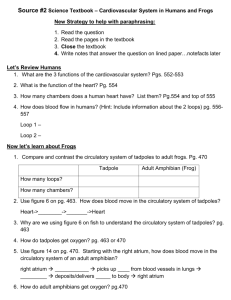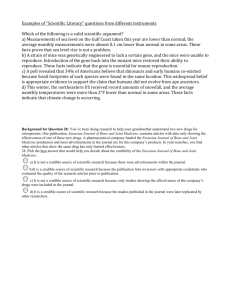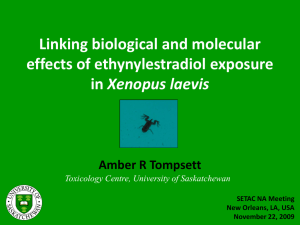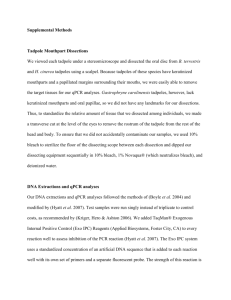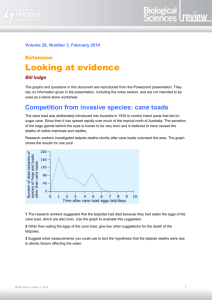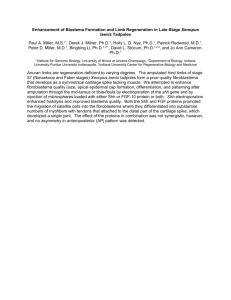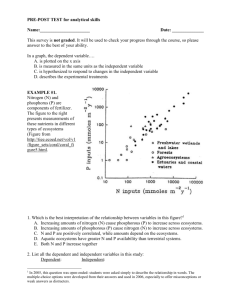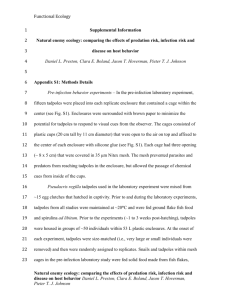Larval Diet in the Leaves: The Case of Two Tadpoles of the Genus
advertisement
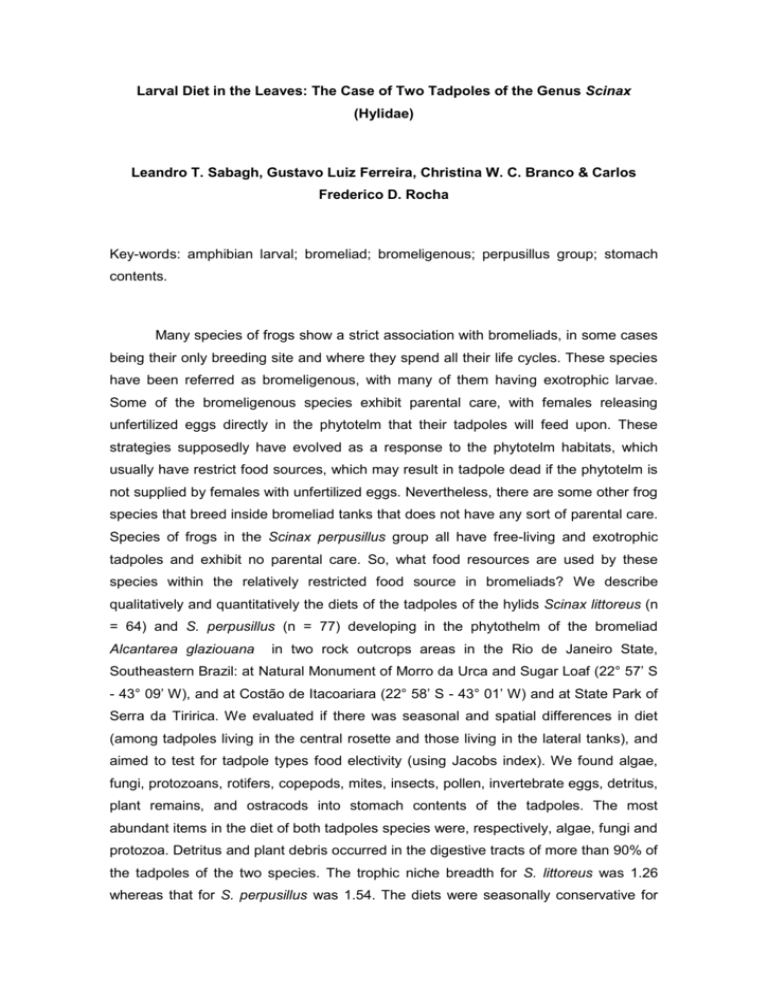
Larval Diet in the Leaves: The Case of Two Tadpoles of the Genus Scinax (Hylidae) Leandro T. Sabagh, Gustavo Luiz Ferreira, Christina W. C. Branco & Carlos Frederico D. Rocha Key-words: amphibian larval; bromeliad; bromeligenous; perpusillus group; stomach contents. Many species of frogs show a strict association with bromeliads, in some cases being their only breeding site and where they spend all their life cycles. These species have been referred as bromeligenous, with many of them having exotrophic larvae. Some of the bromeligenous species exhibit parental care, with females releasing unfertilized eggs directly in the phytotelm that their tadpoles will feed upon. These strategies supposedly have evolved as a response to the phytotelm habitats, which usually have restrict food sources, which may result in tadpole dead if the phytotelm is not supplied by females with unfertilized eggs. Nevertheless, there are some other frog species that breed inside bromeliad tanks that does not have any sort of parental care. Species of frogs in the Scinax perpusillus group all have free-living and exotrophic tadpoles and exhibit no parental care. So, what food resources are used by these species within the relatively restricted food source in bromeliads? We describe qualitatively and quantitatively the diets of the tadpoles of the hylids Scinax littoreus (n = 64) and S. perpusillus (n = 77) developing in the phytothelm of the bromeliad Alcantarea glaziouana in two rock outcrops areas in the Rio de Janeiro State, Southeastern Brazil: at Natural Monument of Morro da Urca and Sugar Loaf (22° 57’ S - 43° 09’ W), and at Costão de Itacoariara (22° 58’ S - 43° 01’ W) and at State Park of Serra da Tiririca. We evaluated if there was seasonal and spatial differences in diet (among tadpoles living in the central rosette and those living in the lateral tanks), and aimed to test for tadpole types food electivity (using Jacobs index). We found algae, fungi, protozoans, rotifers, copepods, mites, insects, pollen, invertebrate eggs, detritus, plant remains, and ostracods into stomach contents of the tadpoles. The most abundant items in the diet of both tadpoles species were, respectively, algae, fungi and protozoa. Detritus and plant debris occurred in the digestive tracts of more than 90% of the tadpoles of the two species. The trophic niche breadth for S. littoreus was 1.26 whereas that for S. perpusillus was 1.54. The diets were seasonally conservative for both tadpole species (Kolmogorov-Smirnov test – p > 0.05 / Dmax ≥ 0.22) and spatially similar only for S. perpusillus (KS - Dmax = 0.44; p = 0.307). Scinax littoreus tadpoles showed differences in diet, depending on the microhabitat they develop in the bromeliad (KS - Dmax = 0.67; p = 0.028), and showed electivity favorable for fungi (0.50) and negative for copepods (- 0.99). Tadpoles of S. perpusillus did not show feeding preferences (all values near to zero). Our data suggested that the tadpoles of S. littoreus and S. perpusillus are omnivores by eating a wide range of items, however, the true trophic position need further analysis involving stable isotopes to be better establish what is eaten and effectively processed the species. Acknowledgments: We thank the SMAC – Rio de Janeiro and INEA for permits to research at conservation areas. CAPES, CNPq, and FAPERJ for financial supporting.


